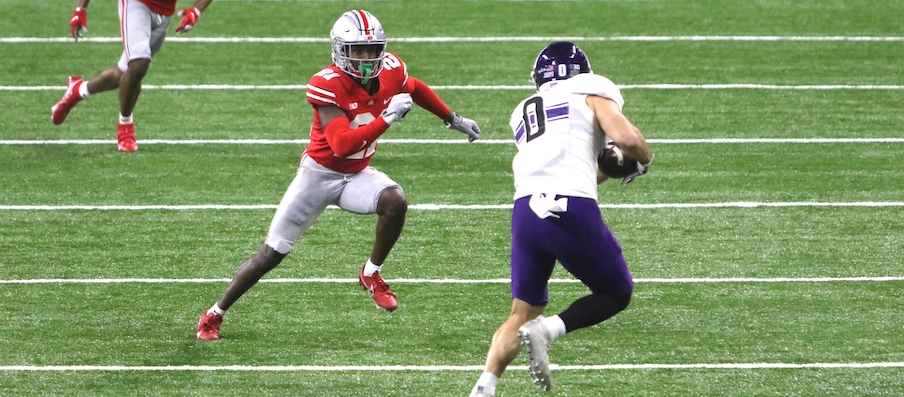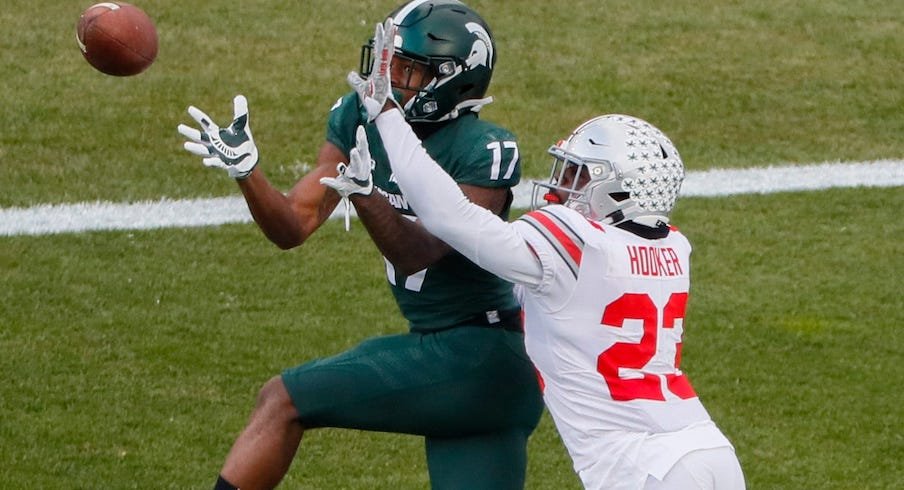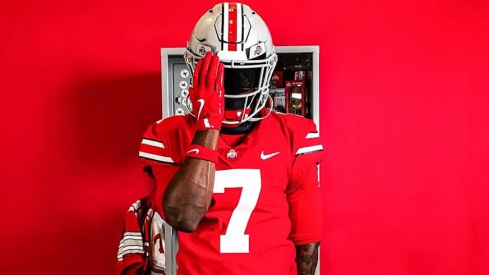Thirty-seven days within a season typically allow you to learn something about every facet of a football team.
For Ohio State, the past 37 days have offered a lens into the importance of Chris Olave to this offense as a downfield threat and the in-season improvement of Trey Sermon from an exceedingly average tailback to someone who broke the program’s single-game rushing record that Eddie George held for two and a half decades. They shined a light on the talent of Justin Hilliard who played the game of his life in the Big Ten championship and showed why Justin Fields isn’t a finished product as a decision-maker.
But throughout those five weeks, almost nothing about Ohio State’s defensive backfield could have been gleaned. Barely anything happened during that time period could tell people how it’ll perform when matched up with a Trevor Lawrence-powered Clemson passing attack in Friday’s Sugar Bowl.
Thirty-eight days ago, Michael Penix carved up the Buckeyes’ secondary. In a 42-35 loss, he sparked a second-half near-comeback by completing 27-of-51 passes for 491 yards, the most that had ever been recorded versus Ohio State since Purdue's Jim Everett threw for six more yards 35 years ago. He tossed five touchdowns passes and a sole interception. That afternoon, the Buckeyes escaped with a victory, avoiding a loss that would have proved catastrophic to their College Football Playoff chances. But within the game, the lingering concerns about an inexperienced secondary with depth concerns boiled over. They became full-blown issues that day.
Afterward, head coach Ryan Day separated the requisite response to Penix torching the secondary into a trio of categories.
“Any time you have a problem like that, it’s one of three things,” Day said in his post-game press conference after beating Indiana. “You say to yourself, do you have the right personnel there? So you look at who’s doing it. Then the second thing is, what is the scheme? Does the scheme give our guys the right opportunity to be successful? And then if both of those boxes get checked, then it goes to coaching. Are we coaching it correctly? So I think that’s, when you’re trying to fix something, you have to identify one of these three things that needs to get addressed, or maybe a little bit of each.”
That sure sounded good. It certainly seemed like Day had an idea of what his players and coaching staff needed to address.
But in the ensuing weeks, Ohio State has had minimal opportunities to prove itself on the field. Few chances to try out schematic adjustments, test personnel packages in-game settings and work through significant issues plaguing the Kerry Coombs-led secondary.
The Buckeyes watched as an increase in positive coronavirus tests first within their own program then within Michigan led to cancellations of games versus Illinois and the Wolverines. That wiped out half of their remaining contests. They managed to get onto the field for tilts on the road at Michigan State and in the conference title game with Northwestern, yet neither of those teams were built to win games through the air.
“They really weren't challenged in the back end in that game, to be quite honest,” Day said on his weekly 97.1 radio show after the Buckeyes beat Michigan State. “But they are getting better and they are making progress.”

The Spartans rank 80th nationally with 6.9 yards per passing attempt, accruing 11 throwing touchdowns and 12 interceptions, while the Wildcats are tied for 108th in the country by averaging six yards per throw with nine touchdowns and eight interceptions. Clemson, comparatively, is 17th with 8.6 yards per attempt to go along with 29 passing touchdowns and five interceptions.
How, really, can you get a better understanding of how Ohio State’s secondary will play versus one of the best passing attacks in the country based on how it looked against two subpar opponents? That’s borderline impossible, especially when considering the guys missing from action.
Against Michigan State, the Buckeyes were without safety Josh Proctor, leaving them unable to experiment much. Then in the Big Ten title game, they didn’t have safety Marcus Hooker or Ronnie Hickman at their disposal.
Yes, those absences allowed – or forced, depending on how you look at it – them to give guys like Hickman (vs. Michigan State) and Lathan Ransom (vs. Northwestern) extra looks, but their time was limited. Both of them played well, but neither looked like a no-doubt-about-it answer to the issues that had popped up. Based on the five-game regular season followed by a conference title game, the Buckeyes just didn’t have much allowable time to determine whether or not they should make significant personnel adjustments. What are they going to do, throw Hickman or Ransom into the fire versus Clemson after looking solid against middling passing offenses once or twice? Seems unlikely.
It would’ve been appreciably more helpful for Coombs and his staff to have a full complement of defensive backs over the past month. Instead, Ohio State had to take a piecemeal approach. The coaches had minimal choices other than to lessen two-safety looks versus the Spartans and put Proctor back at free safety against the Wildcats. In the Sugar Bowl, it’s perhaps likely that the Buckeyes go to more two-safety packages with Hooker again manning the free safety spot. So, it’s fair to wonder just how much the Buckeyes even learned about themselves in those two games.
Still, Coombs truly believes the secondary has improved since the Indiana debacle.
“We got better. We got better in practice,” Coombs said on Dec. 8. “One of the big messages from Ryan has been execution. Execution matters. It matters in practice. That's going to be a real focus today. We've got to continue to execute. We weren't good enough in execution on everything last week, so we've got things to improve on. That's what we're going to work on today. That will be a constant source of activity for us is continuing to work on the big plays. But I do believe we got better, yes.”
That’s all fine and dandy, but there’s plenty of reason for those outside the Woody Hayes Athletic Center to take a wait-and-see approach.
Shaun Wade, Sevyn Banks, Marcus Williamson, Proctor and Hooker haven’t faced a quarterback like Lawrence all season. And while Clemson doesn’t have first-round wide receivers littering its rotation, it’s still been one of college football’s best big-play passing offenses. The last time this group faced a competent quarterback with above-average wideouts, it didn't go well for the Buckeyes who need no reminder of that fact.
Whether or not the progress Coombs referenced shows up on Friday night could ultimately determine whether or not the Buckeyes travel to Miami 10 days later to play for a national championship.


